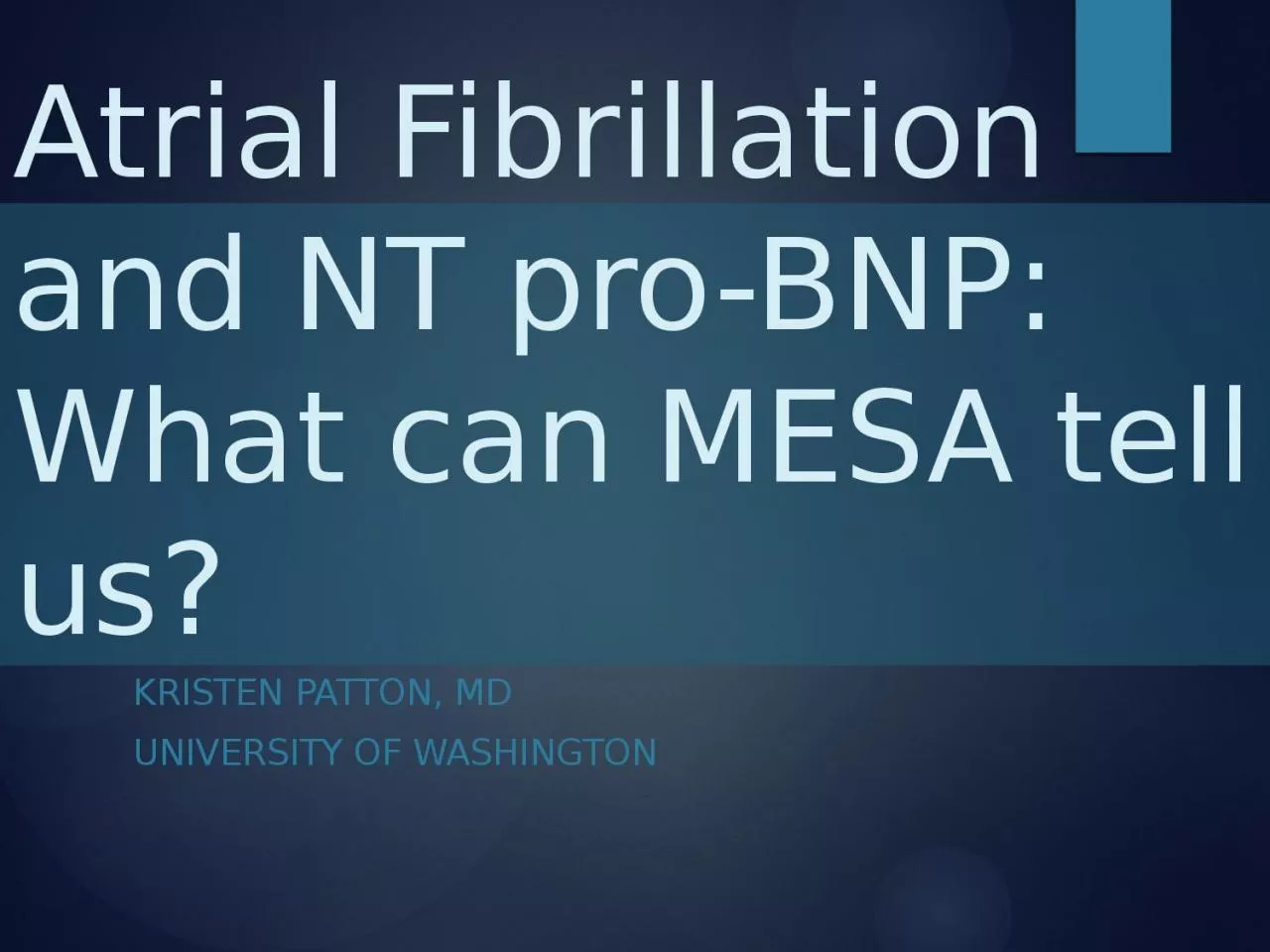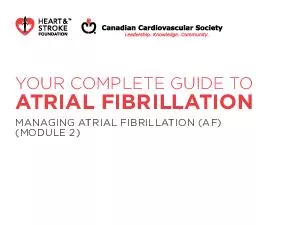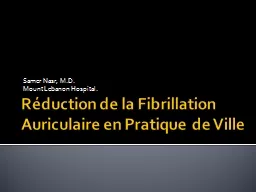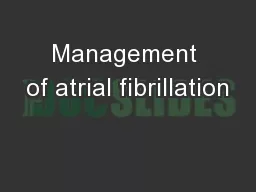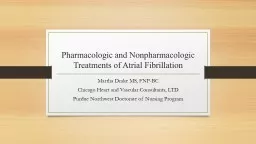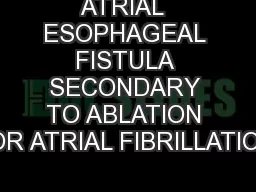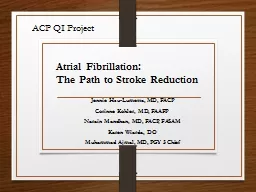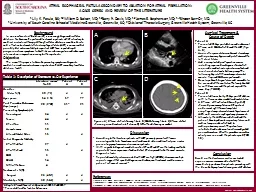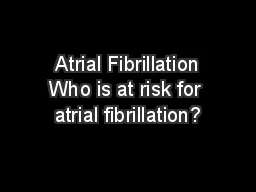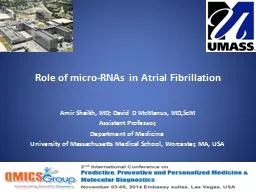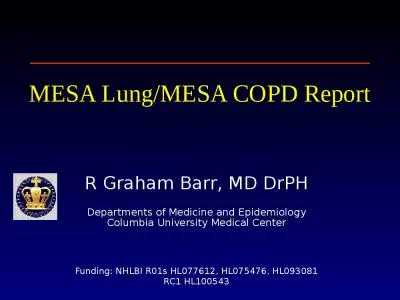PPT-Atrial Fibrillation and NT pro-BNP: What can MESA tell us?
Author : ceila | Published Date : 2024-01-03
Kristen Patton MD University of Washington Go A S et al JAMA 200128523702375 AF is common Incidence rises with age Lifetime burden 14 Prevalence of Diagnosed AF
Presentation Embed Code
Download Presentation
Download Presentation The PPT/PDF document "Atrial Fibrillation and NT pro-BNP: What..." is the property of its rightful owner. Permission is granted to download and print the materials on this website for personal, non-commercial use only, and to display it on your personal computer provided you do not modify the materials and that you retain all copyright notices contained in the materials. By downloading content from our website, you accept the terms of this agreement.
Atrial Fibrillation and NT pro-BNP: What can MESA tell us?: Transcript
Download Rules Of Document
"Atrial Fibrillation and NT pro-BNP: What can MESA tell us?"The content belongs to its owner. You may download and print it for personal use, without modification, and keep all copyright notices. By downloading, you agree to these terms.
Related Documents

